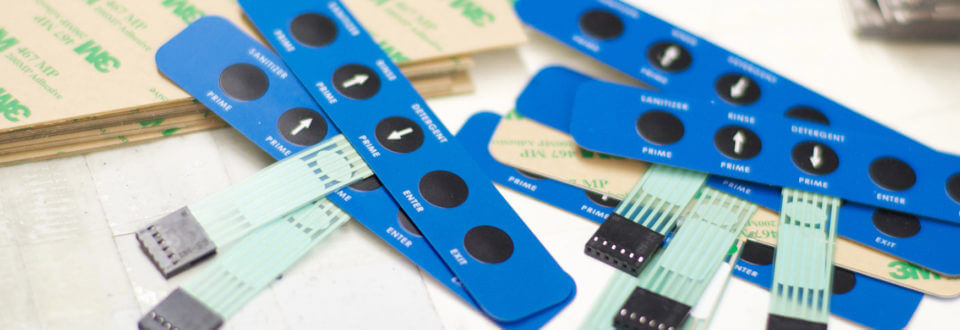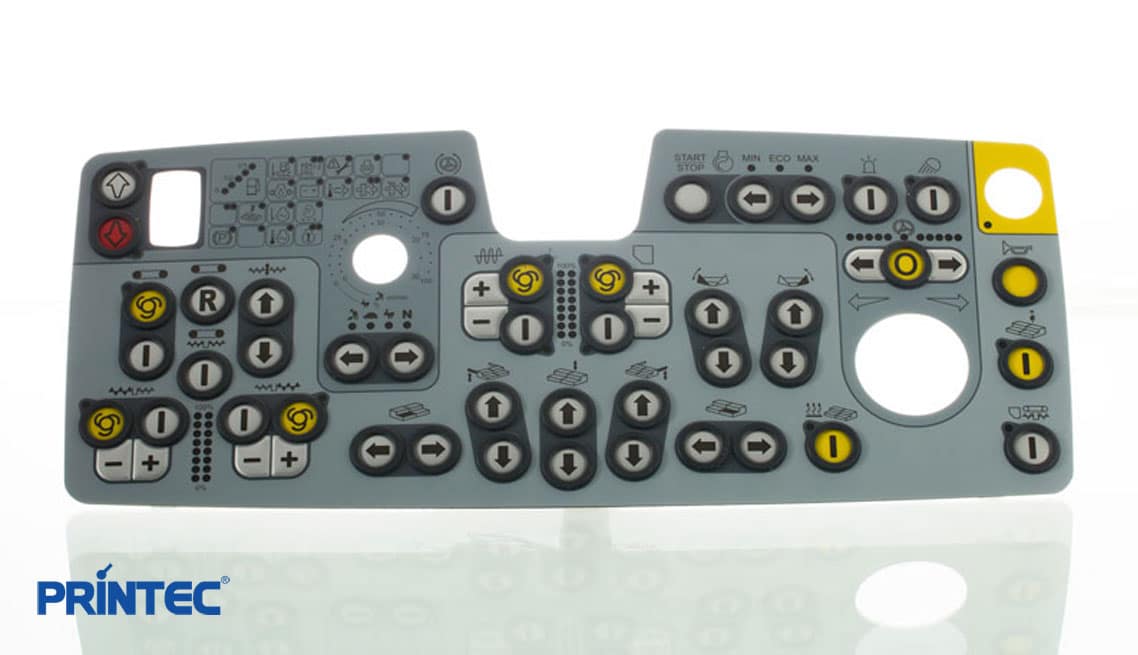Explore the Relevance of Membrane Switches in Streamlining Device Controls
Explore the Relevance of Membrane Switches in Streamlining Device Controls
Blog Article
The Ultimate Resource on Membrane Switches: Style, Functionality, and Applications
Membrane switches offer as an appealing intersection of design and performance, playing an essential function in modern customer interfaces across different fields. As we explore the varied applications of membrane layer switches, it becomes noticeable that their flexibility and resilience are important in environments ranging from medical care to customer electronic devices.

Understanding Membrane Layer Switches
Membrane layer switches are a kind of user interface technology extensively utilized in numerous digital gadgets, defined by their slim, adaptable style and performance. These buttons contain multiple layers that consist of visuals overlays, sticky layers, and wiring, enabling a reliable and small user interface for users. They can be found in home appliances, medical devices, and commercial control board, supplying a trustworthy technique for customer interaction.
One of the primary benefits of membrane layer buttons is their ability to resist impurities such as dirt and moisture, making them suitable for environments where toughness is essential. Their low-profile style allows for smooth integration right into different applications, while the adjustable visuals overlays boost customer experience by giving clear aesthetic comments. Additionally, membrane layer switches can accommodate a range of technologies, such as responsive feedback and backlighting, additional improving their use.
The manufacturing process for membrane layer switches generally involves display die-cutting, printing, and lamination strategies, ensuring accuracy and uniformity in production. On the whole, membrane switches represent a reliable and flexible option for contemporary digital devices, combining functionality with aesthetic charm in user interface layout.
Secret Parts and Design Elements
A range of key components and style elements come together to develop an efficient membrane button. At the core, the graphic overlay offers both useful and visual objectives, supplying an easy to use interface while securing inner parts from environmental elements. The selection of products, typically polyester or polycarbonate, influences resilience and tactile responses.
Underneath the overlay, the adhesive layer guarantees the switch adheres safely to the substrate, which can be glass, metal, or plastic. The spacer layer is crucial, as it preserves the required gap in between the circuit and the overlay layers, allowing for efficient actuation. Membrane Switches. Circuit traces, usually made from conductive ink or adhesive, are published on a versatile substrate, allowing electric signals to be transmitted when stress is applied
Style factors to consider also consist of the arrangement of tactile domes or embossing that give physical responses to the individual, enhancing the total experience. Furthermore, the format and spacing of the switches must be maximized for simplicity of use, making certain that individuals can navigate the interface with ease. On the whole, these elements and layout components function synergistically to create a trusted, useful membrane layer button tailored to details applications.
Performance and Operation Device
At the heart of effective capability for membrane switches over lies their operational mechanism, which helps with customer interaction via a simple yet reliable layout. These buttons operate the concept of pressure activation, where an individual applies force to an assigned location of the button (Membrane Switches). This activity compresses the layers of the switch, completing an electric circuit that sends out a signal to the connected tool
The building and construction generally consists of a top visuals layer, a sticky spacer layer, Get More Information and a lower circuit layer, which jointly develop a durable interface. When stress is used, the leading layer falls down against the bottom circuit layer, enabling conductive traces to link. This style not only enables clear responsive feedback however additionally ensures longevity and dependability, as the switches are often immune to dirt and moisture.
Furthermore, the adaptability of membrane layer switches over enables integration with various technologies, consisting of LED indications and microcontrollers, improving their functionality. By providing a structured interface that minimizes mechanical wear, membrane changes continue to be a preferred selection in applications ranging from consumer electronics to commercial equipment, guaranteeing optimum performance and individual complete satisfaction across varied environments.
Sorts Of Membrane Switches

Another significant group is illuminated membrane layer switches, which incorporate backlighting to enhance presence in low-light problems. These switches are often made use of in control panels and control panels where clear visibility is crucial.
Additionally, there are custom-made membrane layer changes designed to satisfy specific dimensional, visual, and functional needs. These modifications can consist of unique shapes, shades, and designs, enabling seamless assimilation into various tools.

Applications Across Numerous Industries
Exactly how do membrane buttons boost capability throughout varied sectors? In the medical field, membrane switches play a vital function in gadgets such as analysis devices and client monitoring systems, where reliability and ease of cleaning are vital.
In the vehicle sector, membrane layer switches are frequently used in control panels and control panels, offering instinctive controls that boost chauffeur security and ease. The consumer electronics sector additionally gains from their customizable and lightweight features, allowing streamlined styles for smartphones and home devices.
In addition, membrane buttons discover applications in commercial automation, where they add to efficient machinery operation and surveillance systems. Their resistance to dust and dampness guarantees capability in demanding problems (Membrane Switches). In addition, the food and beverage market utilizes membrane layer switches for tools control, where hygiene and sturdiness are vital
Final Thought
In conclusion, membrane layer switches over stand for a vital advancement in user interface innovation, defined by their distinct style and performance. The versatility of membrane changes promotes their application across varied industries, from medical devices to customer electronics.
Membrane switches over serve as a fascinating junction of design and functionality, playing a crucial role in modern-day individual interfaces throughout numerous sectors.Membrane buttons are a kind of individual interface technology widely made use of in different electronic gadgets, identified by their slim, flexible design and capability.At the heart of efficient functionality for membrane layer switches over lies their operational mechanism, which facilitates individual communication via a basic yet reliable style. These buttons operate on the principle of stress activation, where a customer uses pressure to an assigned location of the button.In verdict, membrane changes represent a critical technology in customer interface innovation, identified by their one-of-a-kind design and performance.
Report this page